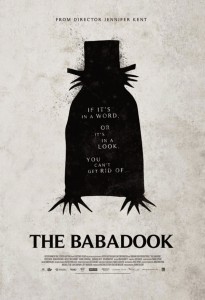“I will pelt you with filth, I will treat you with contempt
Nahum 3:6 (NIV)
and make you a spectacle.”
Spectacle is the key word here in Jordan Peele’s latest foray into the horror genre. Nope features a real shift in tone from previous films US (2019) and Get Out (2017), moving from the realms of a shadow state and slavery to more subtle finger pointing at greed and the consequences of taking nature for granted.
I don’t want to spoil anything in this review as this film has the same hallmarks as M. Night Shaymalan’s legendary Signs in that once the antagonist of Nope is revealed, everything makes more sense. The first watch is incredibly powerful to take that revelation in, and you should have the opportunity to experience that first hand.
What I will talk about is how ingenious the premise of this film is on the thematic level. It’s going to take more watches to really tease it all out, as with Peele’s other two films, but what I have after just one viewing has had the wheels in my head spinning and inspired me to pen this review so quickly after the watch. I just can’t stop thinking about Nope. What has really captivated me is the unraveling of what a “miracle” is. Now in the Christian and Jewish faiths, based on events described in the Bible, miracles are almost always thought of and conveyed as positive and powerful manifestations of supernatural power and might. Moses and the burning bush, Jacob’s Ladder, The Walls of Jericho, Jesus and Lazarus, etc. However, miracles can be negative in nature too. They can be a manifestation of supernatural wrath, a rebalancing of nature – the plagues cast upon Egypt, the razing of Sodom and Gomorrah, the serpent in the garden of Eden, the great flood that prompted Noah’s building of the Ark.
What those negative miracles are is spectacle, referenced in that powerful verse of Nahum, an old testament book written by the eponymous minor prophet. It is a largely overlooked section that tells the story of the fall of the great Assyrian empire circa 615 BCE, but Peele has used this deep old testament text to great effect in telling a modern horror parable.
There are three stories that move in different directions – one of the Haywoods, a family of black ranchers and horse trainers known for their legendary work providing animals for Hollywood productions, but with the recent and freak death of patriarch Otis Haywood Sr, son Otis Jr. and Daughter Em are left trying to salvage their family legacy. The second thread involves the traumatic past of child actor and star Ricky “Jupe” Park, who rose to fame in a 90’s kid’s western film and then went on to star in a sitcom that was marred by a traumatic accident involving an on-set chimpanzee cast member. In the modern day, he has capitalized on his child stardom by building a kitschy western theme park on the property adjacent to the Haywood Ranch, and his fixation on burying the past instead of learning from it intertwines the destiny of both his theme park and the Haywood ranch.
I think there will be a lot of nay-saying and punching down on Nope because it is not subtle in many of it’s themes and mechanisms. I think it was an ambitious story that hit a lot of marks and why I thought Nope was such a departure from previous works.
- The major commentary on modern Hollywood:
- disrespect of live animal welfare and trainers
- industry shift to CGI instead of practical effects
- pretentious and grizzled art directors
- wannabe livestream superstars
- Hollywood hustlers
- child stars
- the paparazzi
In addition to the thorough roasting of Hollywood’s folly, there is an intentional recurrence of visual elements that key on the “spectacle” and focus – framed by spectacular cinematography of day and nighttime vistas. There’s an uneven but unsettling pacing in this film, a quick first and final act with an intentionally slow middle. There’s the actual full reveal of the antagonistic entity after dancing around the issue in the first two acts. As the goals of the Haywoods seem to shift from making money to exacting revenge, it marks an evolution from greed to principle, and their freedom from oppression both seen and unseen. Prophetically and Literally.
One day I will write about the spoiler-y parts. Take this as a down payment and catch Nope for yourself. I’m seeing way too many hot takes about Peele being the next M. Night. An unfair assessment of both director’s careers. I think Peele’s ambitions are still playing out fine on the screen. Shayamalan’s career and box office swoon was more of a product of poor production influence more so that trying to sell movies that no one can understand or wants to. I think he gets a bad rap, sure there are some stinkers but a lot of his ‘real’ work still holds up.
Trailer:






